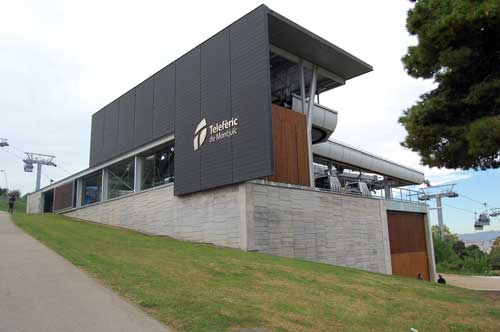Last fall I had an opportunity to tour and document Barcelona’s Montjuïc Cable Car and Funicular. This is the second of two parts documenting the Cable Car system. For the first part, click here. And to learn more about the Barcelona Funicular, click here.
Perhaps what’s most interesting about the Montjuïc Cable Car is its ownership structure. Unlike the overwhelming majority of cable car systems around the world, the Montjuïc Cable Car is owned by a public transportation agency.
While this isn’t entirely unique—look at London and San Francisco—it is still an anomaly in the world. Public Transit agencies the world over are, almost without fail, dedicated to providing public transit to the local commuting public and shun tourist-oriented systems.
The reasons are as much ideological as they are financial.
With their layers of bureaucracy and unionized staff, transit agencies generally aren’t built to successfully (profitably?) run a tourist attraction. That’s not a criticism of transit agencies, it’s simply to state what should be obvious to most—transit isn’t about making money, it’s about a piece of civic infrastructure that enables mobility.
Sure, there are a handful of transit systems around the globe that operate profitably but those are the exception rather than the rule.
And then there’s the Montjuïc Cable Car. According to estimates I was given, the system experiences roughly 1.3 million riders a year at an average price of €7 per rider.
Operations and Maintenance costs were estimated to be between €2-4mm per year. The entire system, rebuilt in 2007, was completed for less than €16mm, all in.
Having said that, these figures come with three major caveats:
Firstly, this installation was a rebuild of a previous system. Rebuilds are almost always cheaper and easier than new builds for the simple reason that the heavy-lifting of permitting and land acquisition (among other things) has already been completed by the previous system designers.
Secondly, Spain has a low cost of living relative to other major western cities. Comparing the costs of a system (both capex and opex) built in a Spanish city to other major, developed cities (such as London) isn’t entirely fair.
Lastly, we don’t have hard confirmation of those numbers, so they should be taken with a grain of salt. They are, however, within the norms that we’ve observed in other installations and therefore have no reason to doubt their veracity (within reason, of course). Furthermore, it’s important to remember that this is a system with three stations, rather than simply two—and the general rule in cable transit is that the marginal cost of extra stations is far more than the marginal cost of extra length.
This system, in other words, was a bargain.
Notwithstanding the previous caveats, do the math and you quickly understand that this system is more than likely profitable to a very high extent—a fact confirmed by my tour guide.
Apparently TMB (the local transit agencies) funnels profits from the Montjuïc Cable Car into the wider public transportation system to help offset the costs of running its more standard systems. It’s certainly not enough to cover the entire costs of the rest of the system, but even a few million euros in additional revenue a year helps.
It’s an interesting model that introduces a question:
Just because a public transit agency is designed in a way that limits profit, shouldn’t agencies look to profit-making ventures as a means to offset their continually rising costs? Some might argue that such ventures are best left to the public sector and are not within the mandate of a purely public transit system.
The Montjuïc Cable Car, on the other hand, argues—rather effectively, I might add—otherwise.


2 Comments
Many public transit agencies around the world make money. Lots of money in fact. However, in North America this becomes a delicate issue. I’d say that we need to stop looking at transit as purely a subsidized activity.